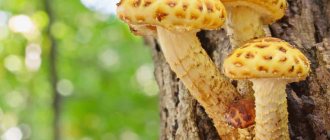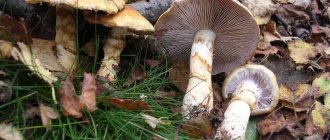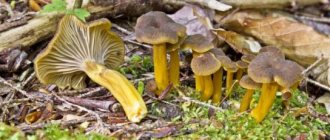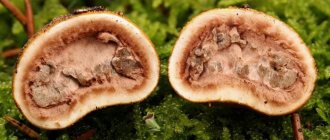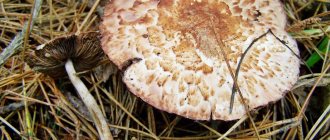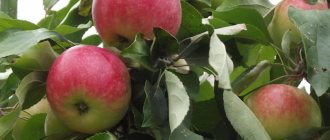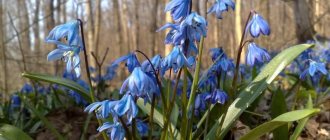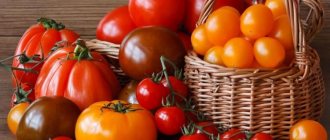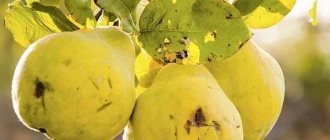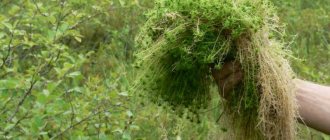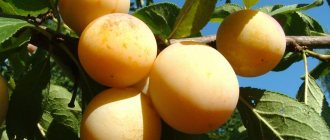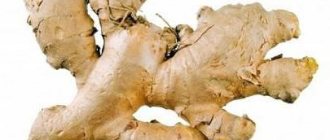Characteristics of champignons
hat
— Advertising —
The cap is massive, dense, round in shape in young mushrooms, and becomes flattened with age. The surface is smooth, sometimes with dark scales. The color of the cap varies from white to brown and brown.
Pulp
The pulp is colored in shades of white. In air it turns yellowish or reddish. It has a pronounced mushroom or anise aroma.
Leg
— Advertising —
The leg is central, smooth, with a dense structure, sometimes loose or hollow. A one- or two-layer ring, a remnant of a bedspread, is clearly visible on the leg.
Where do champignons grow?
Champignons grow on humus-rich soils, on the bark of dead trees and on anthills. Depending on the type of main substrate, they are classified into species that are found only in forests (A. silvaticus, A. silvicola), those growing in open areas (A. bisporus, A. bitorquis, A. subperonatus), growing in grass (A. campester, A. augustus, etc.), found in forests and open areas in grass thickets (A. arvensis, A. comtulus, etc.), desert species (A. bernardii, A. tabularis).
— Advertising —
Champignons are most common in the steppes and forest-steppes of Eurasia, as well as in the prairies, pampas, and meadows of Australia and Africa.
Edibility of champignons
A very small number of champignon species are toxic or inedible, such as the yellow champignon (Agaricus xanthodermus) and the variegated champignon (Agaricus meleagris). All other species are used for food. The bisporus champignon (Agaricus bisporus) is cultivated on an industrial scale.
Fresh champignons are often used even raw, and when heat treated they are an instant product. Young mushrooms are cleaned and washed with cold water, cut into thin slices. Raw champignons are added to salads and cold appetizers. Champignons are also served boiled, fried, stewed, baked, or grilled. Many dishes are prepared based on these mushrooms: first courses, juliennes, vegetable stews, omelettes, pies and pancakes, mushroom pates, sauces, pizza.
Benefits and harms of use
Snow-white mushrooms are a very useful product. They contain a large amount of folic acid, which the body needs for the production of red blood cells, proper metabolism, and the functioning of the cardiovascular, nervous and digestive systems. Folic acid is very important for the proper functioning of the female reproductive system; it is involved in the formation of the placenta and is necessary for the proper development of the fetus. These mushrooms also contain vitamins and amino acids, which are very useful for women expecting the birth of a baby.
Champignon has few calories, but high energy value . They are perfect for dietary nutrition. They are also high in protein and antioxidants and can be eaten even by people with diabetes. The product contains even more B vitamins than fresh vegetables. The high content of plant fibers makes dishes made from these mushrooms more satisfying and improves metabolism in the body. Because of these properties, nutritionists highly recommend including them in the diet of those who want to lose weight and also strengthen muscle mass.
The benefits and harms of champignons for the human body
However, those who like to pick mushrooms should know that in the forests there are doubles of this mushroom - false champignons, which will not benefit the body, but only harm.
Mushrooms collected near factories or highways can also cause harm, because they accumulate harmful substances. Those who are allergic to this product should not consume them.
Types of edible champignons
Common champignon, pecheritsa (Agaricus campestris)
The cap is 8-15 cm in diameter, in young mushrooms it is hemispherical, the edge is curved, later it is flat-rounded and spread out, the center is convex, the surface is white or brownish, dry, silky. The pulp is white and turns red when cut. The stem is 5-9 cm high, 1-2 cm wide, straight, even, the color matches the cap, there is a wide white ring in the middle of the blade.
It grows in groups, in rich soils in gardens, parks, and near human habitation. The fruiting season lasts from May to October.
Crooked champignon (Agaricus abruptibulbus)
The diameter of the cap is 8-12 cm, the shape is ovoid in young mushrooms, later convex or wide-conical to flat. The skin is fibrous, pure white or cream in color, leaving yellow spots when touched. The pulp is thin, white, and has an almond or anise aroma. The leg is 10-14 cm long, 0.8-2 cm in diameter, hollow, thickens towards the base.
Grows in coniferous forests, under pine trees, in groups, from summer to late autumn.
Field champignon (Agaricus arvensis)
The cap is thick, fleshy, in young mushrooms it is rounded-bell-shaped, the edge is rolled up, later it becomes convex-spread, with a tubercle in the center and a wavy edge. The diameter of the cap is 8-20 cm, the color is white or cream, in mature mushrooms it acquires an ocher tint and turns yellow when pressed; feels silky, smooth or scaly to the touch. The pulp is dense, white or yellowish in color, sweet in taste, with the smell of almonds or anise. When scrapped it turns yellow. The leg is 6-10 cm long, 1-1.5 cm in diameter, cylindrical in shape, smooth, with a wide white ring, the color matches the cap.
It is found in open areas overgrown with grass, meadows, forest clearings, and pastures. Grows singly or in groups in the northern temperate zone from late May to mid-October-November.
August champignon (Agaricus augustus)
The cap is scaly, orange-brown, bright in the center, in young mushrooms it is spherical in shape, flattens with age, up to 15 cm in diameter. The flesh is white, dense. The leg is 5-10 cm high, 2 cm thick, thickens towards the base.
Grows in rich soils in forests and parks.
Bernard's champignon (Agaricus bernardii)
The cap is 7-15 cm in diameter, fleshy, convex or flat in shape, the surface is dry, the edge is smooth. The skin is white or grayish and cracks. The pulp is dense, white, gradually turning pink. The smell is unpleasant. The leg is 5-10 cm long, 2-4 cm thick.
It grows in coastal marine areas of Europe, along roads, in large groups. The season lasts from summer to autumn.
Champignon (Agaricus bisporus)
The cap is 3-8 cm in diameter, round in shape, with a curled edge, from white to brown. The surface is smooth, fibrous, sometimes scaly. The pulp is dense, juicy, and turns pink at the break. The leg is 3-10 cm high, 3-4 cm wide, smooth, cylindrical in shape, with a ring.
A rare species that bears fruit in groups on compost heaps and gardens.
Double-ringed champignon (Agaricus bitorquis)
The diameter of the cap is 3-15 cm, the structure is thick-fleshy, the color is white or off-white, the surface is smooth. The flesh is dense and turns pink when broken. The leg is 3-10 cm high, 2-4 cm thick, smooth, white. There is a double ring on the leg. The smell and taste are sour.
Cosmopolitan mushroom. Grows in rich soils, in forests, parks, along streets and roads.
Dark fibrous champignon (Agáricus fuscofibrillosus)
The cap is 4-7 cm in diameter, convex, flattens with age, with a tubercle in the center, the surface is dry brown, fibrous. The pulp is thin, white, turns pink in the air, taste and smell are not pronounced. The stem is 4-8 cm long and 6-12 mm thick, smooth, hollow, whitish, light brown in old mushrooms, with a fragile white ring.
A rare species, it bears fruit from August to October, singly or in groups in deciduous and mixed forests.
Dark red champignon (Agaricus haemorrhoidarius)
The diameter of the cap is 8-12 cm, the shape is convex or conical, gradually flattening. The surface is brownish-brown in color and cracks. The pulp is white, turns red when cut, the taste is mild, the smell is mushroom, sour. The leg is 8-10 cm long, 1.5-2 cm thick, off-white in color, hollow, with a ring.
It grows rarely in deciduous forests, in groups, from summer to autumn.
Great forest champignon (Agaricus langei)
The cap is up to 15 cm in diameter, hemispherical in shape, with a rounded tubercle in the center, flattens with age. The skin is light brown, scaly. The pulp is white, turns red when cut, and is fragile. Mushroom aroma, pleasant. The leg is 12 cm long, with a ring, fibrous, brown.
Grows in coniferous forests from August to October.
Champignon (Agaricus macrosporus)
The hat is convex, white, 25 cm in diameter. The leg is whitish, flaky. The base is thickened. There is a ring on the leg. The pulp is white, dense, turns red when cut, and has an almond aroma.
Porphyry champignon (Agaricus porphyrizon)
The cap is 5-8 cm in diameter, convex in shape, the surface is fibrous, lilac-purple. The pulp is white, turns yellow when cut, with an almond aroma. The leg is 4-6 cm high, 0.7-1 cm in diameter, white, with a narrow ring, the base is thickened yellow.
Grows in autumn, in deciduous forests, parks, gardens, singly or in small groups. Found in Europe.
Elegant champignon (Agaricus comtulus)
The diameter of the cap is 2-5 cm, the structure is thin-fleshy, the shape of young mushrooms is semi-round or bell-shaped, with a tubercle in the center, and flattens as the mushroom grows. The edge is thin, turned up. The surface is whitish or yellowish, bare. The leg is 3-5 cm in height, up to 0.5 cm in thickness, cylindrical in shape, central, white with a yellow tint. The pulp is white, has a pungent taste and almond aroma.
Grows in deciduous and mixed forests in Europe, Asia, North America and North Africa. Fruiting continues from June to October.
Forest champignon (Agaricus silvaticus)
The cap is ovoid-bell-shaped, diameter 7-10 cm, in mature mushrooms it becomes flat-spread, with a tubercle, rusty-brown color, the surface is scaly. The pulp is white and turns red when cut. The leg is 4-6 cm in height, 1-1.5 cm in thickness, cylindrical in shape, with a ring.
The season lasts from July to October, the mushroom is found in coniferous and mixed forests.
Woodland champignon (Agaricus silvicola)
The diameter of the cap is 5-10 cm, the shape of young mushrooms is ovoid, later convex or flat. The surface is smooth, silky, white or cream in color, and turns yellow when touched. The pulp is thin, white, turns yellow when cut, and has an aniseed smell. The stem is 8-12 cm high, 1-2 cm in diameter, fibrous, hollow in mature mushrooms, thickened at the base.
Grows in coniferous and deciduous forests, on rich soils, in groups, in the northern temperate zone. The fruiting season continues in summer and autumn.
Champignon (Agaricus spissicaulis)
The cap is 5-8 cm in diameter, in a young mushroom it is hemispherical, and flattens with age. The surface is whitish, smooth, the edge is rolled up. The pulp is whitish in color, thick, turns red when cut, and has an almond smell. The leg is club-shaped, thick.
Grows in meadows, clearings, and chalk soils. Rare view. Fruits from July to mid-autumn.
Poisonous doubles
A mushroom like champignon has very dangerous doubles. These are inedible mushrooms that are very dangerous for humans. These include:
- pale grebe;
- light fly agaric.
These twins have similar colors and grow in different forests in the summer. Inexperienced mushroom pickers may confuse them with edible champignons. They are especially similar to its copse appearance. Young specimens are very similar in appearance. They have similar caps and plates, and there are rings and scales on the stem. However, as the mushrooms grow, the plates of a real champignon change color, but that of a toadstool does not change.
Also, when pressing on a poisonous specimen, its color does not change, but remains the same. In addition, toadstools have root sacs or volvae. They have legs inserted into them.
The pale grebe is very dangerous. It does not have an unpleasant odor, unlike the fly agaric and is easier to confuse with an edible mushroom. In order to get fatal poisoning, it is enough to consume 1 gram of a poisonous product per 1 kilogram of weight.
Signs of poisoning by dangerous look-alike mushrooms, as a rule, appear some time after their consumption, so it may be too late to provide help. In view of this, you should very carefully study the characteristics of edible and false champignons so as not to confuse them.
Poisonous and inedible types of champignons
California champignon (Agaricus californicus)
Poisonous mushroom.
The surface of the cap is dry, whitish or brown, dark in the center, bare or scaly. The edge of young mushrooms is turned down. The pulp has an unpleasant odor similar to phenol. The leg is smooth, curved, with a ring.
Grows in forests and gardens of California.
Möller's champignon (Agaricus moelleri)
Inedible mushroom.
The diameter of the cap is 5-14 cm, convex or flat in shape, the surface is white, scaly. The pulp is white, turns brown when cut, and has an unpleasant odor. The stem is 6-10 cm high, 1-1.5 cm thick, white, yellow in old mushrooms, the base is widened.
Grows in fertile soil, in forests and parks, in groups and rings, in the northern temperate zone. Rare view. Fruiting is observed from late summer to autumn.
Dark scale champignon (Agaricus phaeolepidotus)
Poisonous mushroom.
The cap is 5-8 cm in diameter, in young mushrooms it is hemispherical and bell-shaped, later convex and prostrate, white or brown, scaly. The leg is 4-8 cm high, 1-1.2 cm in diameter, smooth or curved, thickens at the base, bare, fibrous, whitish, with a ring. The pulp is soft, white, and turns yellow when exposed to air. The smell is not pronounced.
It grows in Europe, in deciduous forests, in groups.
Champignon (Agaricus tabularis)
A little-known inedible mushroom.
The cap is flat-convex in shape, 5-10 cm in diameter, thick, fleshy, dense, whitish in color, cracking and scaly. The flesh is whitish in color and turns yellow when touched. The leg is 1-3 cm thick, 3-4 cm high, thick, wide, dense, with a ring.
Grows in deserts, semi-deserts, steppes of Eurasia, North America. The species is included in the Red Book of Ukraine.
Yellow-skinned champignon (Agaricus xanthodermus)
Poisonous mushroom.
The diameter of the cap is 5-15 cm, bell-shaped, the edge is curved inward, fleshy, white, turns yellow when touched, the surface is smooth, dry. The pulp is brownish-white, yellow-orange at the base of the stem, and has an unpleasant phenolic odor. The leg is 6-10 cm high, 2-3 cm wide, white, hollow.
Found in deciduous forests in North America and Europe, Australia. Fruits from July to October.
Differences between false and real mushrooms
Those who like to pick mushrooms in the forest should be careful. They may be in danger. The fact is that among the edible forest champignons there are also false ones. Among them:
- flat-headed champignon;
- red-haired;
- yellow-skinned.
It is very important to be able to distinguish them from edible ones. They often grow in wooded areas, but are sometimes found in meadows and swamps. In appearance, they are very similar to edible champignon. However, they have slight differences that make it possible to recognize a false mushroom.
For example, when you press on the flesh of a false champignon, it becomes yellowish, and when cut at the base of the stem, its color becomes bright yellow. After a short amount of time, the area turns orange and sometimes brown.
If we compare them with edible mushrooms, then when pressed, the flesh of edible ones becomes pinkish or reddish. In addition, the inedible mushroom has a very specific and not very pleasant aroma. Its odor is similar to that of drugs, iodine or carbolic acid. If such a mushroom is placed in boiling water, the water will immediately acquire a yellow tint and the smell will become stronger.
Description and beneficial properties of the goat mushroom (kid, lattice)
Growing champignons at home
The main component of the substrate for growing champignons is compost. This is a 1:3 mixture of winter rye or wheat straw and horse manure. The substrate is prepared outdoors under a canopy or in a well-ventilated area.
Substrate ingredients: for 100 kg of straw, 2 kg of urea, 2 kg of superphosphate, 7-8 kg of gypsum, 5 kg of chalk. After adding manure, approximately 300 kg of substrate is obtained, which is enough for an area of 2.5-3 m².
First, the straw is soaked for a day. Moistened straw and manure are placed in layers in a stack (3-4 of each layer). During the process of laying it, the straw layer is additionally moistened (300-400 liters of water are used per 100 kg of straw) and 0.5 kg of superphosphate and 2 kg of urea are gradually added. The mixture is thoroughly mixed and all other ingredients are added. Next, fermentation of the substrate begins, on the 3rd day the temperature inside the stack rises to 65-70°C. With a stack height of 1.5 m, length and width of 1.2 m, the compost will be ready after 3 weeks.
High-quality, sterile champignon mycelium is used as seed material. There are two varieties: grain and compost. For 1 m² and 100 kg of substrate, 350-400 g of grain mycelium are needed. About 500 g of compost is consumed; it is more stable, but less productive.
Before sowing, the substrate is heat treated or pasteurized. Afterwards it is cooled to 24-25°C and poured into boxes with a layer of 25-30 cm. About 100 kg of substrate is used per 1 m² of area. A handful of mycelium is deepened by 4-5 cm, placing the holes in a checkerboard pattern at a distance of 20-25 cm.
Air humidity in the room is maintained at 70-95%. The boxes are covered with burlap or newspaper and carefully sprayed with water. The optimal temperature inside the substrate is 20-27°C.
After 8-12 days, the mycelium will grow and the surface of the substrate is covered with a covering soil of 1 part chalk and 9 parts peat. For 1 m² of area, 40-50 kg of cover soil is used.
On days 3-5 after this, the room temperature is reduced to 12-17°C. The surface continues to be moistened and the room is well ventilated.
The first harvest appears after 3-4 months. Collect champignons with a stretched film connecting the stem and the edge of the cap. The mushrooms are carefully twisted out, and the holes are sprinkled with cover soil and watered.
Fruiting lasts 8-14 weeks and produces up to 7 waves of harvest. From 1 m² of area, 5-12 kg of champignons are collected.
Primary processing and preparation
To preserve the beneficial qualities of forest champignons, they need to be properly processed. Adhered soil residues, dried or wilted areas are removed, the legs are trimmed a little, and specimens with rot are discarded. After this, the mushrooms are washed and heat treatment begins.
It is best to prepare dishes from freshly picked specimens: storage worsens their taste, aroma and appearance. Wild champignons make excellent soups; mushrooms are great for frying, as an addition to vegetable and potato side dishes. This type of champignon is not entirely suitable for pickling and other preparations for future use, since the most pronounced taste qualities are revealed precisely in hot dishes.
The limited methods of preparing these mushrooms are compensated by their other, pleasant property. If the weather is favorable and you take good care of the mycelium when collecting forest champignons, they will delight you with the appearance of friendly families in their unchanged habitat every two weeks.
Interesting facts about the mushroom
Champignon is the most popular cultivated mushroom in the world. The share of its production from the total volume of mushroom cultivation is 37.2%. The gross harvest of champignons, for example, in Russia in 2015 amounted to 10.4 thousand tons.
Edible champignons contain 20 amino acids, including all essential amino acids for humans, making mushrooms a valuable source of protein.
Antibiotics have been isolated from the fruiting bodies of some species.
